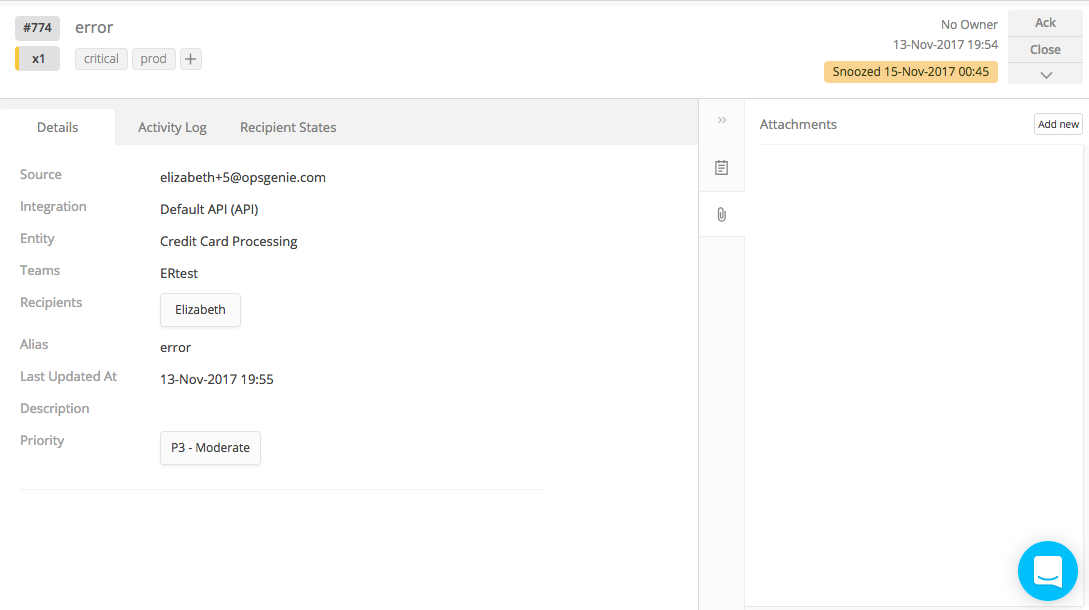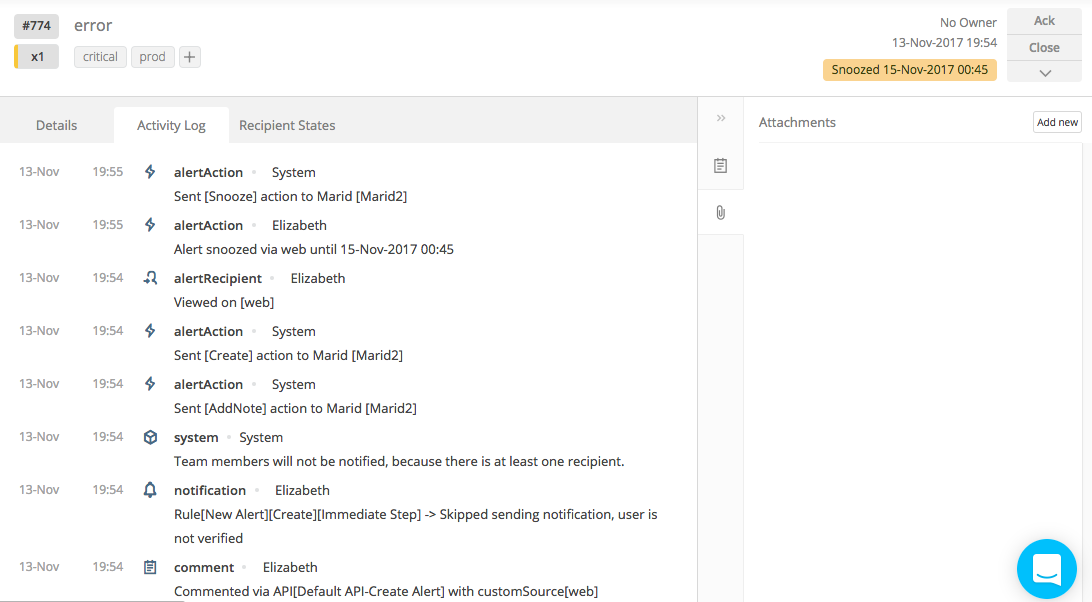Alerts and Alert Fields
Alerts are the main entities for your incident management flow within Opsgenie. Alerts start keeping information provided by the triggering event and are finalized according to configurations once they are created. The content of the alerts is updated as long as there are interactions/updates to them.
The content of alerts consists of both the informational fields whose values are specified by the end user and the state fields that Opsgenie keeps updating as long as there are interactions with or updates on the alert.

In the heading space of the alert, the name, tags, owner, date created, and actions (from the drop-down) are displayed. This is where you would add or remove tags. Tags are used to attach labels to alerts for easier identification and categorization of alerts. Multiple-tags should be seperated by spaces. At most 20 tags can be specified for a single alert where each tag is limited to at most 50 characters.

The informational fields and their limitations are:
- Message: This is the only mandatory informational field. HTML formatting for the message values is also supported. This field is limited to at most 130 characters. The message value can be updated later if necessary.
- Teams: Names of the Teams that were added to the alert to be notified.
- Recipients: Names of the recipients that were added to the alert to be notified.
- Alias: The user-defined identifier for the alert which is limited to at most 512 characters. Opsgenie will assign a unique value for this field while the alert is getting created if one is not specified by end user.
- Entity: This field is generally used to specify the domain that the alert is related to, such as name of the server or application which is limited to at most 512 characters.
- Actions: List of custom actions that your users can execute on the alert in addition to the default actions that Opsgenie provides. For a single alert, you can define at most 10 custom actions where each action is limited to at most 50 characters.
- Description: This field is used to keep a long description related with the alert. HTML formatting can also be used for description field. Description is limited to at most 15000 characters. The description value can be updated later if necessary.
- Extra Properties: This field is used to keep additional key-value pairs of your choice related with the alert. Html formatting can be used for extra properties. The number of key-value pairs do not have any limitation; however, total length of the provided values cannot exceed 8000 characters.
If the specified value(s) for any field violates its length or number constraint, Opsgenie will automatically truncate the value(s) from end to fit related constraint.
The state fields that Opsgenie keeps updating are:
- Status: Contains the information of alert state. This field has the value Open/Unacked when the alert is created and Opsgenie keeps updating this field as long as status or acknowledged state of the alert are updated.
- Recipient states: Shows the last state of the recipient users according to the alert. As long as there is an update for a recipient user like receiving a notification, executing an action, etc., Opsgenie keeps updating their states.
- Notes: Shows the notes that were added initially or later by users via Add Note action. Opsgenie keeps updating this field as long as there are new notes. You can provide HTML-formatted texts as notes.
- Activity Log: Opsgenie provides any user or system activity related to an alert along with their update times on this section with the time sequence. Alert creation, user interactions including actions, notifying or skipping to notify a user, de-duplication events are some of the example activities.
Updated 7 months ago
